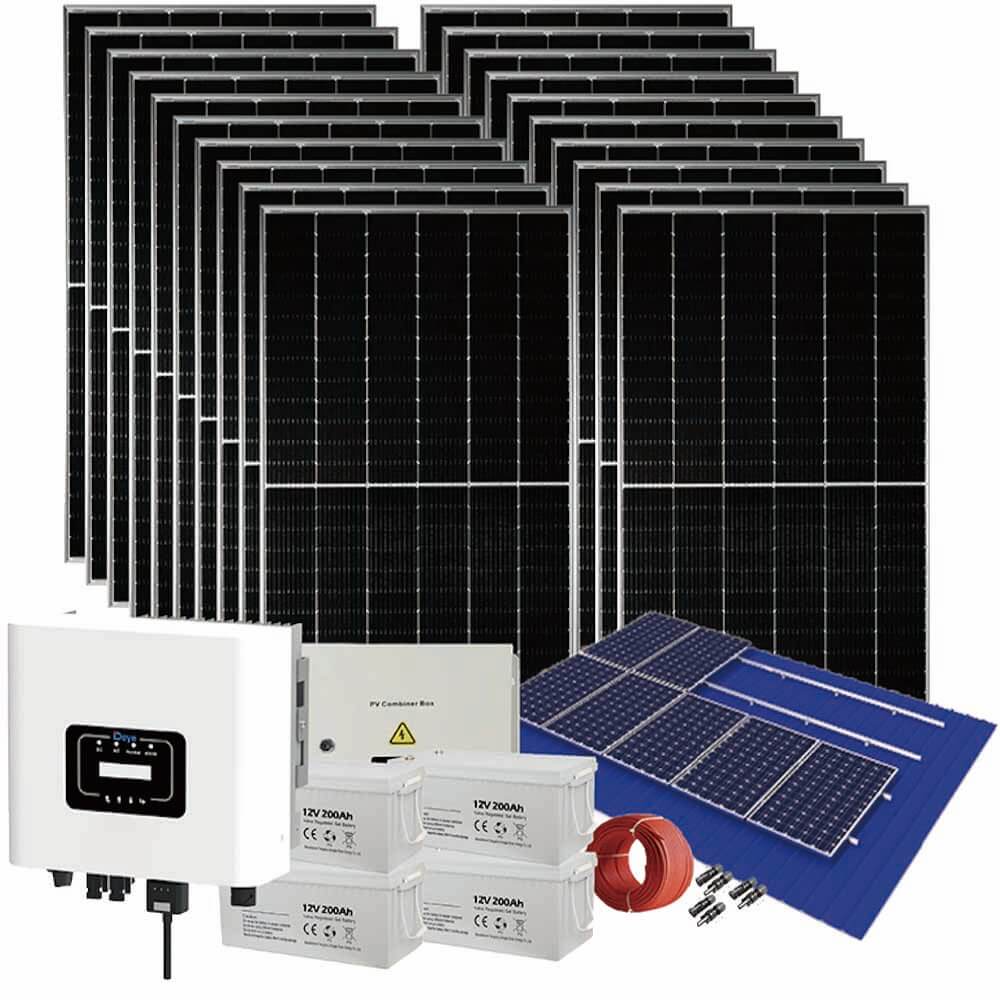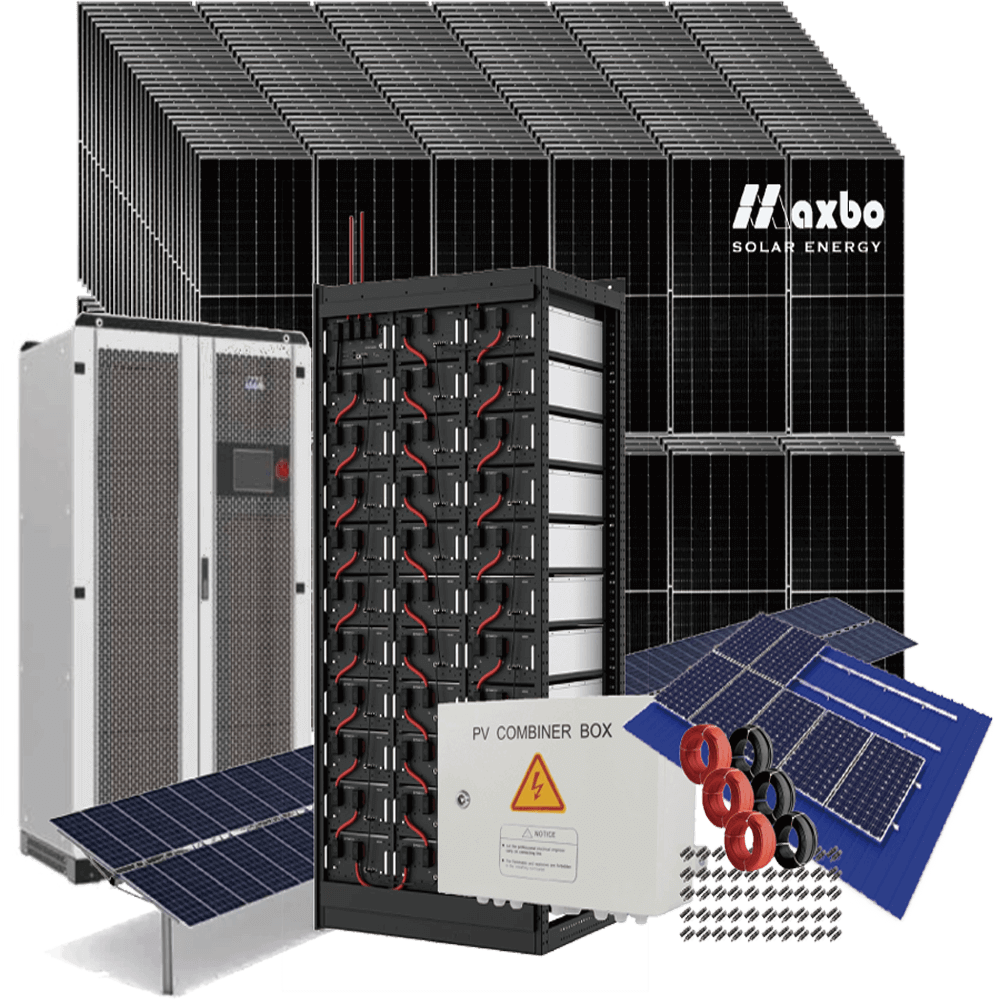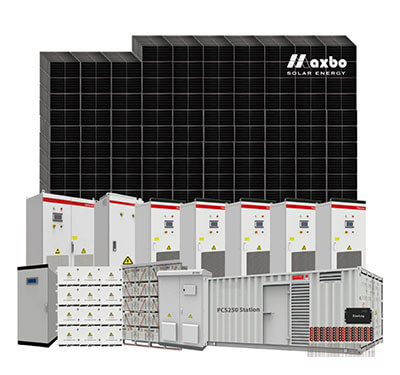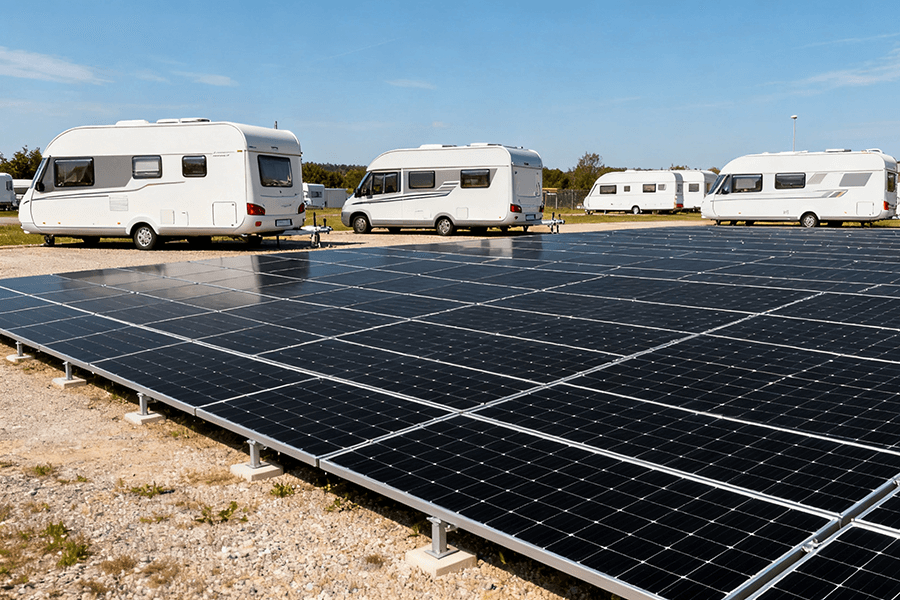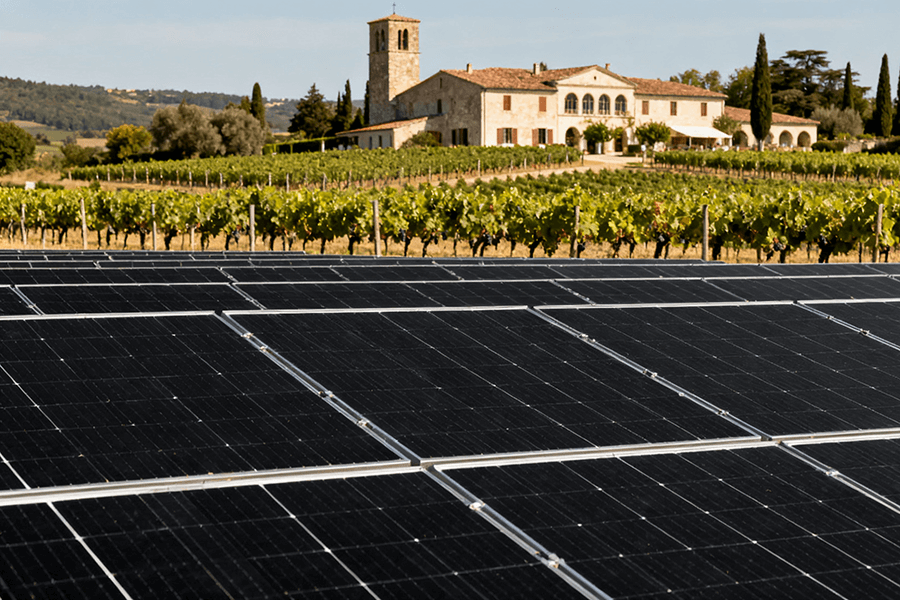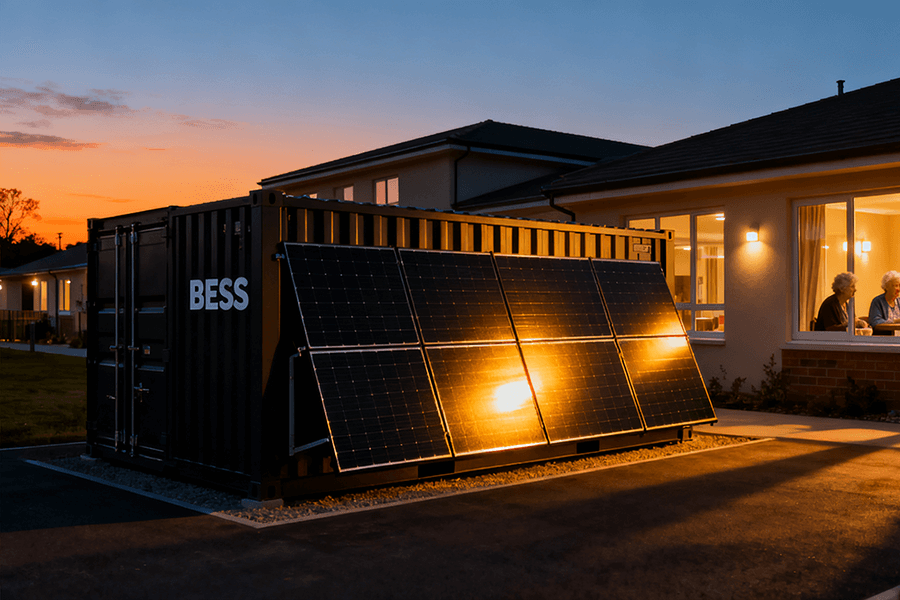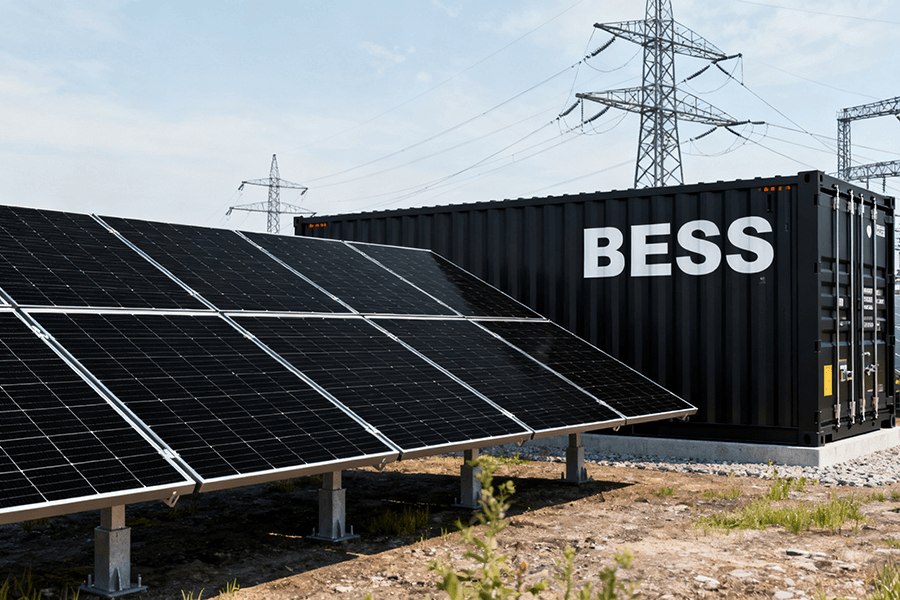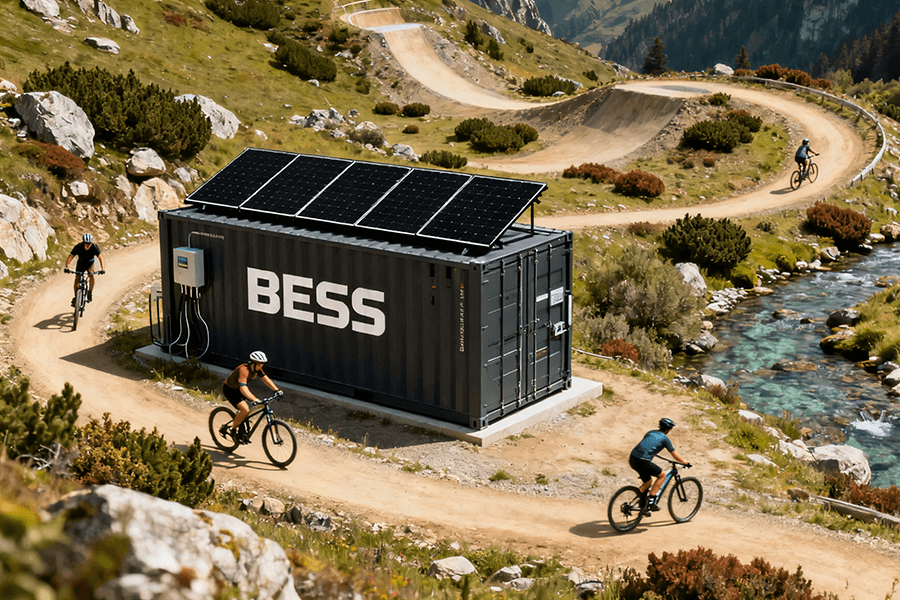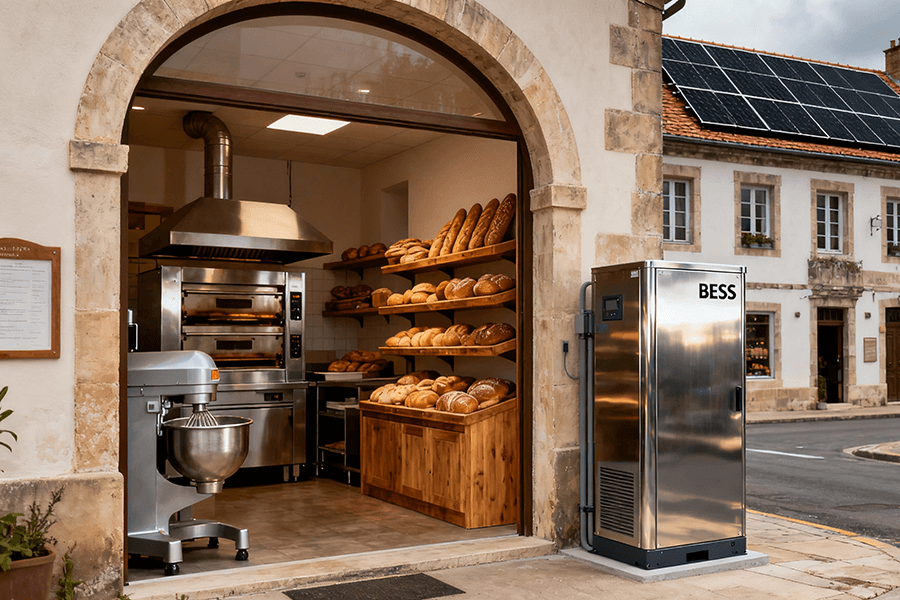How Much Solar Do You Need to Run a Whole House? For an average medium-sized home in Europe (100–150㎡), a 6–9 kW solar system with 12–16 panels (580W each) is typically sufficient to cover monthly energy needs of 500–800 kWh. Larger homes may require 9–12 kW systems with 16–22 panels. As the global shift toward green energy intensifies, solar power has become a cornerstone of sustainable energy solutions. Maxbo, a trusted provider of customized solar photovoltaic (PV) solutions, brings its expertise to help you understand and calculate your solar needs comprehensively.
Key Factors Affecting Solar Energy Needs
To determine how much solar energy is required to power your home entirely, you need to consider the following factors:
Household Energy Consumption
Every home has a unique energy profile based on size, appliances, and lifestyle. Here are the key aspects to assess:
• Monthly Energy Use:
The starting point is to review your electricity bills to calculate your average energy consumption. For example, a typical European home might use 700–1200 kWh per month, which equates to 23–40 kWh per day. Larger homes or those with electric vehicle chargers, air conditioning, or electric heating tend to consume even more.
• Appliances and Load Types:
Energy-intensive devices, such as refrigerators, washing machines, and air conditioners, as well as inductive loads like motors, require a system that can handle startup surges (3–7 times the rated power). These surges must be factored into your solar system’s design.
• Operating Patterns:
The timing of energy use is equally important. For instance, homes with nighttime energy demands will require battery storage to cover hours when solar panels are not producing energy. If the house is connected to the grid, the system can be designed smaller, relying on the grid for supplemental power.
Solar Panel Performance
Solar panels generate energy based on sunlight exposure, panel efficiency, and geographic location. Factors to consider include:
• Sunlight Hours:
Europe has diverse sunlight conditions. Countries like Spain and Italy enjoy 6–7 hours of sunlight daily, while Germany and the UK may only get 3–4 hours. These variations directly affect the number of panels and the system size required.
• System Efficiency:
A standard 580W solar panel can generate about 2.3 kWh/day under optimal conditions (e.g., 4 hours of peak sunlight). If your location receives less sunlight, you’ll need more panels to compensate for reduced output.
• Battery Backup:
Batteries store energy for use during nighttime or cloudy days. Battery capacity is determined by your nighttime energy needs and the reliability of your local grid.
Regional Considerations in Europe
Europe’s diverse geography, climate, and energy policies make solar energy requirements highly variable across the continent. Factors such as sunlight hours, household energy consumption, and government incentives significantly influence the size and configuration of solar systems. Below is a comprehensive analysis by household size, country-specific sunlight conditions, and energy usage patterns to guide European homeowners in their solar planning.
By Household Size
The size of your home, as well as its energy demand, plays a critical role in determining the system capacity and the number of solar panels required. Here’s a breakdown:
| Household Type | Average Area (㎡) | Monthly Usage (kWh) | System Capacity (kW) | Panels Needed (580W) |
|---|---|---|---|---|
| Small Apartments | 60–80 | 300–500 | 4–6 | 7–12 |
| Medium Homes | 100–150 | 500–800 | 6–9 | 12–16 |
| Large Homes | 200+ | 800–1200 | 9–12 | 16–22 |
Key Takeaways:
• Small Apartments: Require fewer panels and smaller systems, suitable for urban settings with minimal energy needs.
• Medium Homes: The most common household size in Europe; these homes balance energy consumption and panel count.
• Large Homes: Often include high-energy appliances such as electric vehicle chargers or heat pumps, requiring larger systems with more panels.
By Country and Sunlight Conditions
The amount of sunlight available across Europe varies widely and directly impacts solar system sizing. Below is a breakdown of average sunlight hours, system adjustments, and recommendations for different regions:
| Country/Region | Sunlight Hours (per day) | System Capacity Adjustment | Panels Needed (580W) | Notes |
|---|---|---|---|---|
| Germany | 3–4 | +20% Capacity | +4–6 Panels | Moderate sunlight; strong feed-in tariffs and government subsidies make larger systems viable. |
| France (South) | 5–6 | Standard | -2–3 Panels | Abundant sunlight; ideal for medium-sized systems with south-facing panels. |
| Italy/Spain | 6–7 | -10% Capacity | -3–5 Panels | Excellent sunlight; smaller systems are sufficient and highly efficient. |
| United Kingdom | 2–3 | +30% Capacity | +6–8 Panels | Cloudy weather increases redundancy needs; battery storage is highly recommended. |
| Nordic Countries | 2–3 | +30% Capacity | +6–8 Panels | Seasonal sunlight variations necessitate robust battery systems for energy reliability during long winters. |
| Eastern Europe | 4–5 | +10% Capacity | 18–22 | Moderate sunlight; increasing incentives encourage solar adoption, making systems affordable and effective. |
Key Takeaways:
• Southern Europe (Italy, Spain, South France): The high number of sunlight hours means smaller systems (6–8 kW, 12–15 panels) are sufficient for medium-sized households.
• Central Europe (Germany, Poland): With moderate sunlight, medium-sized households require 8–10 kW systems and 16–20 panels to compensate.
• Northern Europe (UK, Nordics): Robust systems (10–12 kW, 20–25 panels) combined with 20–30 kWh battery storage are essential to ensure year-round reliability.
By Energy Usage Patterns
Energy consumption varies based on the type and frequency of appliance usage. Here’s how daily energy use translates to system requirements:
| Appliance Setup | Daily Energy Use (kWh) | System Capacity (kW) | Panels Needed (580W) | Notes |
|---|---|---|---|---|
| Basic Appliances (Fridge, Lights, PC) | 10–15 | 4–6 | 7–12 | Suitable for small homes with low energy demand. |
| Standard Appliances (Fridge, AC, Washer) | 20–30 | 7–10 | 12–18 | Common in medium-sized European households. |
| High-Energy Setup (ACs, EV Charger, etc.) | 40–50 | 12–15 | 18–25 | Large homes with energy-intensive appliances. |
Key Takeaways:
• Homes with basic appliances can suffice with smaller systems, while larger homes or those with high-energy setups (e.g., electric vehicles) require significantly larger capacities and panel counts.
Policy Considerations Across Europe
Government policies and incentives significantly influence the financial feasibility of solar installations. Here are some region-specific insights:
• Germany: Feed-in tariffs encourage households to sell surplus solar energy back to the grid, making larger systems (8–12 kW) with high capacity financially attractive. Subsidies also support battery adoption to enhance self-consumption.
• Spain and Italy: With abundant sunlight and falling panel costs, solar adoption is increasing rapidly. Hybrid systems combining grid use and self-consumption are popular, supported by tax rebates and energy-saving incentives.
• United Kingdom: High energy costs and limited sunlight make battery storage essential for maximizing energy use. Grants and subsidies are available for renewable energy installations.
• Nordic Countries: Seasonal sunlight variations necessitate robust battery storage to manage energy needs during low-light periods. Tax deductions and EU funding support solar investments.
• Eastern Europe: Countries like Poland, Hungary, and Romania are seeing rapid growth in solar adoption, driven by EU renewable energy targets and increasing local incentives.
Enhanced Recommendations for European Households
System Design by Region:
1. Southern Europe (Italy, Spain, South France): Medium households can efficiently operate with a 6–8 kW system and 12–15 panels due to abundant sunlight.
2. Central Europe (Germany, Poland): Medium households typically require 8–10 kW systems with 16–20 panels to meet energy needs under moderate sunlight conditions.
3. Northern Europe (UK, Nordics): Robust systems with 10–12 kW capacity and 20–25 panels are essential. Combining these with 20–30 kWh battery storage ensures energy reliability during winter months.
Maximizing Policy Benefits:
• In Germany and Spain, homeowners should leverage feed-in tariffs and incentives for hybrid systems to achieve financial savings.
• In UK and Nordics, focus on self-consumption with reliable battery systems to reduce energy bills and ensure independence from grid fluctuations.
By aligning system design with regional conditions and policies, European homeowners can maximize the efficiency and reliability of their solar installations. Maxbo specializes in creating tailored solar solutions, offering the expertise needed to meet the unique demands of European households.
Calculating Solar Requirements
Step 1: Calculate System Capacity
System capacity depends on daily energy consumption and the average sunlight hours in your location. The formula is:
- System Capacity (kW) = Daily Energy Use (kWh) / Peak Sunlight Hours
For example:
If your household uses 40 kWh/day and receives 4 sunlight hours/day:
- System Capacity=40/4=10kW.
In regions with fewer sunlight hours, like Germany (3.5 hours/day):
- System Capacity=40/3.5=11.43kW.
Step 2: Calculate Panel Count
- Panel Count=Daily Energy Use (kWh)/Daily Output per Panel (kWh)
For 40 kWh/day:
- Panel Count=40/2.3≈18panels.
If sunlight hours are lower (e.g., 3.5 hours in Germany), adjust accordingly:
- Panel Count=40/(580×3.5/1000)≈20panels.
Step 3: Include Redundancy
To account for efficiency losses (shading, inverter efficiency, and temperature), add 10–30% redundancy based on regional conditions. For example:
UK and Nordic regions: Add 30% redundancy.
Southern Europe: Add 10% redundancy.
Example: Solar Requirements for a European Household
Scenario 1: German Household
Home Size: 150㎡
Monthly Usage: 700 kWh
Sunlight Hours: 3.5
Calculations:
Daily Energy Use:
700 / 30 = 23.3 kWh.
System Capacity:
23.3 / 3.5 = 6.66 kW. Add 20% redundancy:
6.66×1.2=8kW.
Panel Count:
23.3 / (580 times 3.5 / 1000) = 12. Add redundancy:
12×1.2≈15panels.
Scenario 2: Spanish Household
Home Size: 200㎡
Monthly Usage: 1000 kWh
Sunlight Hours: 6
Calculations:
Daily Energy Use:
1000 / 30 = 33.3 kWh.
System Capacity:
33.3 / 6 = 5.55 kW. Add 10% redundancy:
5.55×1.1=6.11kW.
Panel Count:
33.3 / (580 times 6 / 1000) = 10. Add redundancy:
10×1.1=11panels.
Critical Components in a Solar System
Solar Panels
Solar panels are the backbone of any PV system. Their performance depends on:
• Efficiency:
High-efficiency panels maximize energy generation, especially in low-sunlight areas like Germany or the UK.
• Durability:
Panels must withstand Europe’s varied weather conditions, including snow, rain, and wind.
• Bifacial Panels:
These can capture light from both sides, improving efficiency in reflective environments like Southern Europe.
Inverters
The inverter is the heart of the system, converting DC electricity from panels into AC for household use.
• Grid-Tie Inverters:
Suitable for homes connected to the grid. Excess energy can be sold back under schemes like Germany’s feed-in tariffs.
• Off-Grid Inverters:
Ideal for remote homes with no grid access.
• Hybrid Inverters:
Combine self-use with grid feedback, maximizing efficiency and flexibility.
Battery Storage
Batteries store solar energy for nighttime or cloudy days:
• Lithium-Ion Batteries:
Compact, efficient, and long-lasting, ideal for residential use.
• Capacity Calculation:
Battery Capacity (kWh)=Nighttime Load (kW)×Operating Hours.
For a household using 10 kWh at night, a 10 kWh battery would suffice. In regions with unstable grids, larger batteries (15–20 kWh) may be needed.
Mounting Structures
Panels must be securely mounted, whether on roofs or the ground:
• Tilt and Orientation:
Panels in Europe should face south and be tilted at 20–40° for optimal sunlight exposure.
• Roof Types:
Pitched roofs are common in Northern Europe, while flat roofs or ground mounts are popular in Southern Europe.
Monitoring Systems
Modern solar systems include monitoring tools to track energy generation and consumption. Smart home integration is becoming increasingly common in Europe, enabling homeowners to optimize energy usage.
Conclusion: A Clear Recommendation
To power an entire house in Europe, you will typically need a 6–12 kW solar system, depending on your household size, energy consumption, and regional sunlight conditions. This translates to 12–22 solar panels rated at 580W each, assuming an average of 4–6 peak sunlight hours per day.
Southern Europe (e.g., Spain, Italy, South France):
Abundant sunlight allows for smaller systems. For a medium household using 30–40 kWh/day, a 6–8 kW system with 12–15 panels is sufficient.
Central and Northern Europe (e.g., Germany, UK, Nordics):
Fewer sunlight hours require larger systems. For the same household, you’ll need an 8–12 kW system with 16–22 panels to ensure sufficient energy, especially during winter.
Off-Grid Homes:
For homes disconnected from the grid, robust battery storage (20–30 kWh) is essential, alongside the appropriate solar system size.
These recommendations account for real-world efficiency losses (10–30%) caused by shading, temperature, and inverter performance, ensuring reliable energy output throughout the year.
Why Choose Maxbo?
Maxbo simplifies the complexity of solar system design by providing tailored solutions based on your unique needs. With expertise across European markets, Maxbo ensures your solar system is optimized for local conditions, offering:
• High-efficiency solar panels and reliable inverters tailored to European weather variations.
• Customized system sizing to match your household energy demands and sunlight availability.
• Long-term savings and energy independence, reducing electricity costs while promoting sustainability.
Let Maxbo guide you into a greener future. With our expertise and top-tier products, powering your home sustainably has never been easier. Reach out to Maxbo today and take the first step toward a more efficient, solar-powered lifestyle.
Email: [email protected]

